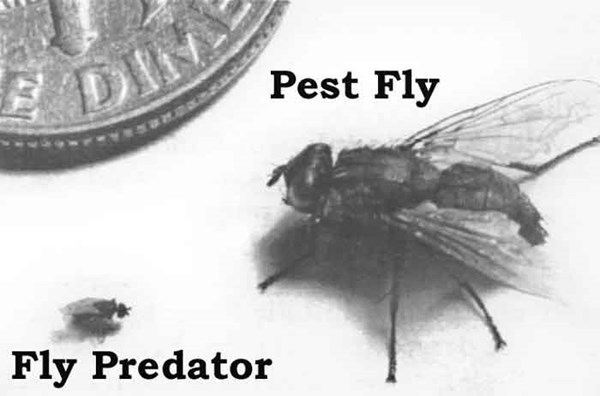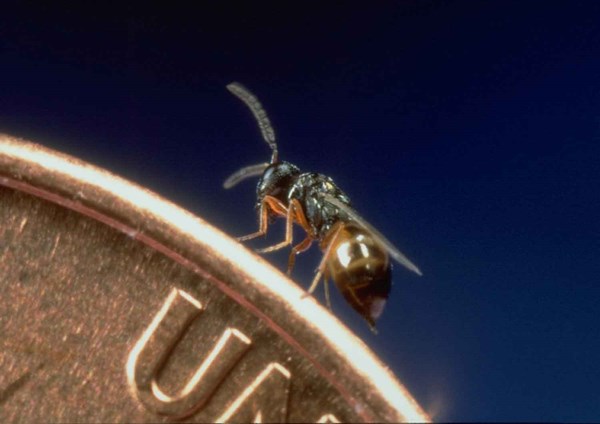 Credit: Courtesy Spalding Labs
Credit: Courtesy Spalding LabsBiological insect control has received great acclaim in recent years as a means of avoiding the use of chemicals in the environment. One such “green” strategy is the use of predator wasps to target stable flies and houseflies, which are the majority of flies pestering your horses. (They won’t work for deer flies or horse flies.) Parasitic wasps seek out their prey, inserting their eggs into the immature stages of these flies, thereby killing fly pupae before they fully develop. The wasps increase in numbers; the flies decrease in numbers. Happily, these parasitic wasps don’t bite or sting and their tiny gnat size makes them pretty much unnoticeable around the farm.
How many parasitic wasps you order from the company is determined by the number of horses (and other livestock) you have on the farm. Some companies provide a guideline for what to order based on the number of horses and other animals, location and acreage. Also factor in the number of insect breeding sites on your particular property. There are several different species of parasitic wasps (Muscidifurax and Spalangia) so confer with the company as to which works best in your area.
The entire property should be “seeded” with predator wasps sprinkled in organic debris in order to achieve good control. Flies can travel up to a quarter of a mile but predator wasps don’t venture past 300 feet, and usually not past their plot of manure. Flies can lay up to a 1,000 eggs that hatch and mature within a week. The wasps aren’t nearly as prolific, only laying 1/3 that many eggs that take three times as long to hatch. The objective is to provide sufficient numbers of predator flies to control the numbers of flies around your property.
Effective use of predator wasps hinges on two principles:
1. They must be released in advance of fly season in early to mid spring and then at regular (usually every 2-4 week) intervals throughout fly season. Ideally, scatter them in areas where they aren’t as likely to be consumed by birds or crushed under foot or equipment.
2. Reduction of fly breeding sites–manure, decomposing organic material like leaves and weeds–must be achieved as well. Wet organic material fosters fly breeding more than dry material.
Not all manure, weeds and water breeding sites need to be eliminated because the wasps need prey in order to propagate and their prey live in these habitats. There is a fine balance between removing too much organic material and not leaving enough.
If also using chemical insect control on the farm, consider that this will kill off the wasps as well as the noxious insects so you may not want to spray manure piles where the wasps are prospering.
Resources to contact for purchase of predator wasps:
1. Spalding Labs Fly Predators
(https://www.spalding-labs.com/products/fly_control_products/default.aspx)
2. Arbico Fly Eliminators
(http://www.arbico-organics.com/category/fly-control-program)
3.Green Methods Fly Parasites (https://greenmethods.com/fly-control/)
 Credit: Courtesy Spalding Labs This image of a Fly Predator from Spalding Labs shows the size of the wasp.
Credit: Courtesy Spalding Labs This image of a Fly Predator from Spalding Labs shows the size of the wasp.

